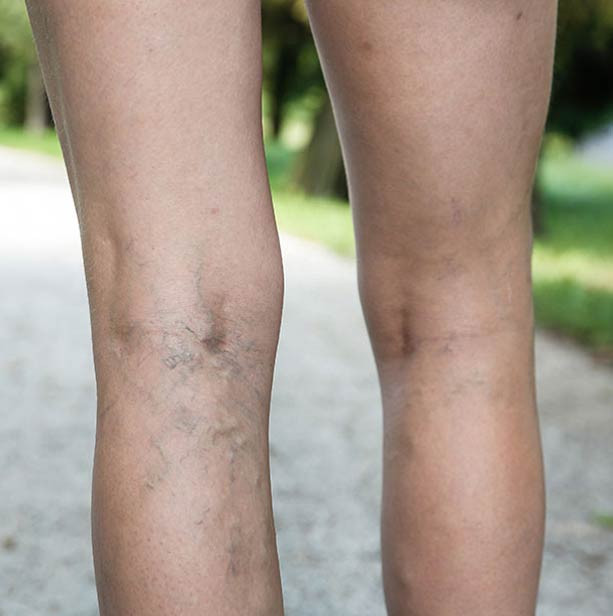Unsightly leg veins, also called ‘varicose’ or ‘spider veins’ have plagued both men and women for many years. The condition is known as Superficial Varicosities and is a dilation of blood vessels near the surface of the skin. They most often appear on the thighs, calves, and ankles. These blood vessels may become large and unsightly and can cause a dull aching of the leg after prolonged standing. These unsightly blood vessels carry blood in the wrong direction which may lead to problems in the future. The majority of these vessels, especially spider veins, are not necessary for our circulatory systems. Therefore, if their presence is distressing, they can be treated by an injection of a solution that will cause them to disappear. This simple procedure is called Sclerotherapy.
Dr Sharon Felzen (MBBS) developed a passion for leg vein treatments called Sclerotherapy many years ago. She has worked with leading vascular surgeons and phlebologists for many years treating leg veins and attended numerous conferences to remain at the forefront of treatment. Her expertise and knowledge are invaluable and has benefited many of our patients at Face To Face Medical.

During the procedure the targeted veins are injected with a special sclerosing solution using a very fine needle. This solution causes the veins to collapse and eventually dissolve and disappear. The procedure usually takes 15-60 minutes, depending on the number of veins to be treated. Patients tolerate this well and no anaesthetic is needed.
After the treatment you will need to wear compression legwear for one week.
The number of treatments required depends on the severity of the problem and part of your assessment will be based on the result of a recent ultrasound of your legs.
Sclerotherapy is a procedure used to eliminate unsightly blood vessels of the legs by the injection of a fluid into the affected veins. The fluid is injected into the blood vessel using a very fine needle. This irritates the blood vessel walls, causing them to contract. Over the next three to four weeks the blood vessel is gradually reabsorbed and either fades or disappears completely.
After several treatments most patients can see some improvement in treated vessels, however the fading process is gradual, and perfection seldom achieved. Most patients can expect a 70-90% improvement in treated veins.
It varies depending on the number of areas that need to be treated, and on the patient’s response to each injection. It usually takes between one to six treatment sessions to effectively treat all the spider veins.
The blood vessels will disappear over a period of six months, but improvement can occur for up to twelve months after each treatment. The treatment works for existing spider veins but does not prevent new spider veins from developing later.
Most people are able to return to work immediately, although redness and inflammation of the treated areas is to be expected, and usually lasts one to two days.
There are risks associated with Sclerotherapy, and whilst they are minimal, they do nonetheless occur in some people.
Face To Face Medical, a team of skilled practitioners who are cosmetic experts delivering personalized treatments and care.
We like to make booking super easy! Select your preferred way to book below:
Book an appointment online
Please note to book Dr. Dahlia Tauber specifically you will need to Book via Phone.
If you have any questions, please call us on 0414 484 191
